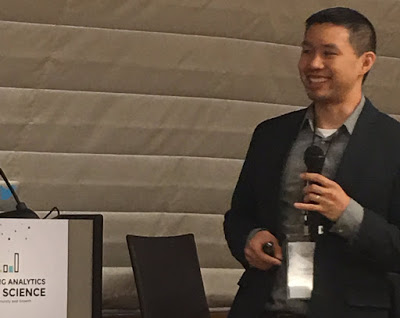How Customer Service Boosts Your Marketing Strategy

Wayne started the discussion with these insightful statistics:
- 80% of social customer service requests come from Twitter.
- 79% of customers are not receiving responses from brands.
- 87% who do get a response feel more positively towards the brand.
He talked about the pitfalls of relying on self-reported surveys when conducting customer research and then detailed a novel experiment he ran on Twitter using a conjoint survey to test how a good (or bad) customer service experience from a brand affects the customer's future decision-making process.
A conjoint analysis is a survey technique and model used to measure preferences for products and services. Consumers' overall value or "utility" for a product is a weighted sum of the value of each of its parts (The whole is the sum of its parts.). Its name comes from "considered jointly" because it almost always involves a comparison of multiple product or service options.
In the conjoint survey, consumers who in the past six months received a response from an airline via Twitter were the test group and those who had no interaction were the control group.
Twitter asked consumers to choose from three airplane ticket options that included this information: the airline, seat location, percentage of on-time arrival, and price. To determine the customers' willingness to pay, Twitter ran a Hierarchical Bayesian regression which calculates a "utility" for all attributes for all respondents. A larger utility indicates a greater preference.
The research findings showed that:
- Consumers absolutely do remember good and bad customer service experiences (up to six months!).
- Consumers are willing to pay more after a good customer experience (up to $20 more).
Wayne's research shows how social media is transforming the way consumers interact with brands and how customer service matters more than you think.
Watch for additional #MADSCONF follow-up stories!
Peggy L. Bieniek, ABC is an Accredited Business Communicator specializing in corporate communication best practices.
Connect with Peggy on LinkedIn, Twitter, Google+, and on her website at www.starrybluebrilliance.com.

